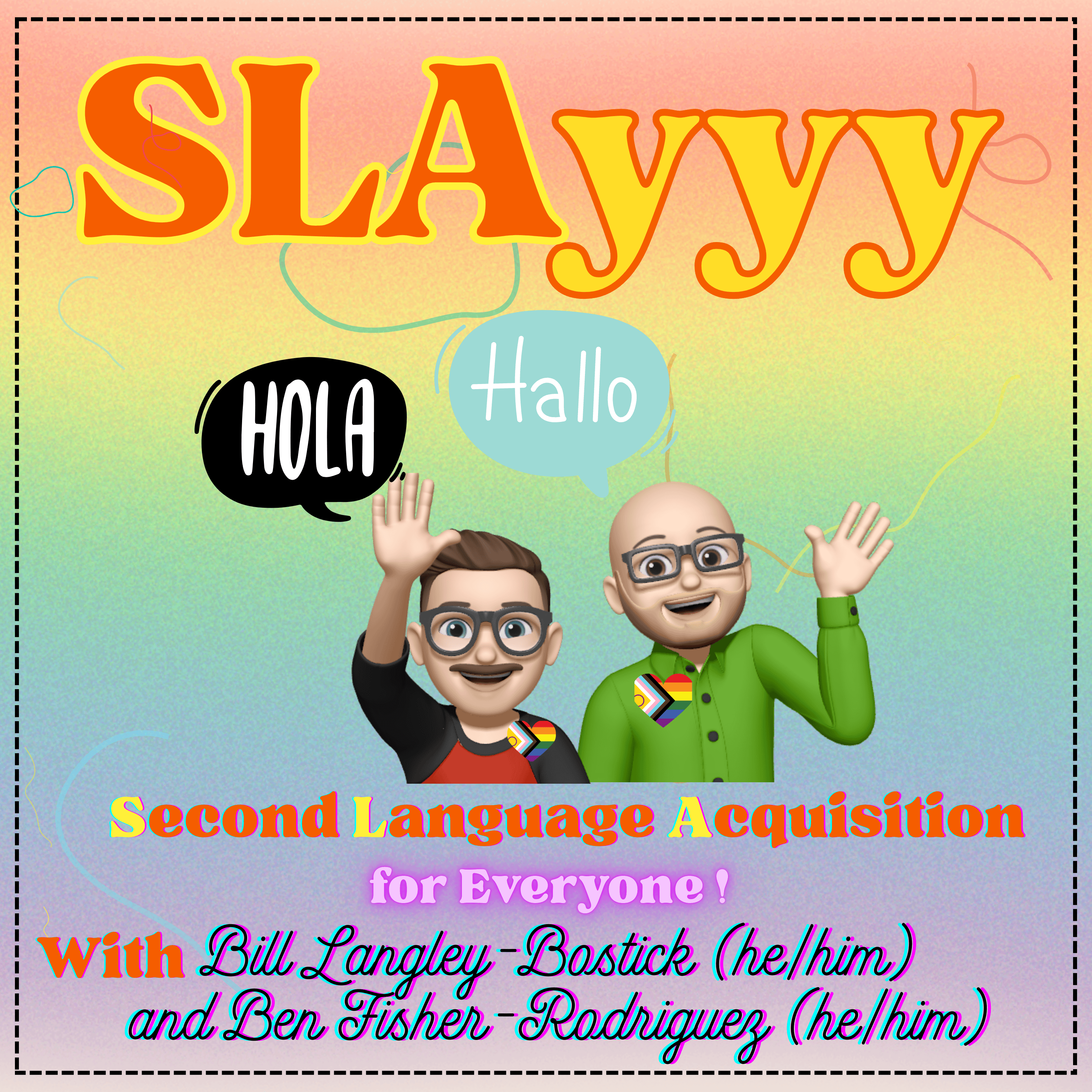
Conversations about Language Teaching
"Conversations about Language Teaching" is a podcast of unscripted discussions of language teaching, drawing on both research and classroom & online language teaching. If you like thinking deeply about issues of classroom language teaching and how those relate to research and theory, this podcast might be for you.
Reed & Diane, the hosts, base our knowledge of language teaching on research we've read & done, theoretical views of language acquisition, our experiences as language teachers and learners, and our observations of language teaching in the US and elsewhere. We like to help build bridges among teachers and researchers and view ourselves as part of both communities. We collaborate on projects & like talking about language teaching & learning, and decided to have some of those conversations in a podcast format. Here it is!
A transcripted, video version of the podcast is on YouTube here: https://www.youtube.com/@ConversationsaboutLanguage
More about Diane: https://sites.google.com/view/dianen/home
More about Reed: http://www.reedriggs.com
Conversations about Language Teaching
Episode 32: Focus on Form
Episode 32 Show notes - Focus on Form
Michael Long’s thinking about “focus on meaning,” “focus on form,’ and “focus on forms” in language teaching, for example:
Long, M. (2008). Focus on form in task-based language teaching. In Language policy and pedagogy (pp. 179-192). John Benjamins Publishing Company. https://scholarspace.manoa.hawaii.edu/server/api/core/bitstreams/82ddd5f2-57ca-4d9e-91ed-5b65b5483395/content
Diane mentioned Patsy Lightbown related to developmental readiness. Nina Spada is the first author on a piece related to that topic:
Spada, N., & Lightbown, P. M. (1999). Instruction, first language influence, and developmental readiness in second language acquisition. The Modern Language Journal, 83(1), 1-22. https://doi.org/10.1111/0026-7902.00002
PACE as a sort of focus on form was developed by Adair-Hauck & Donato. For example:
Adair-Hauck, B., & Donato, R. (2002). The PACE model: A story-based approach to meaning and form for standards-based language learning. The French Review, 265-276. https://www.jstor.org/stable/pdf/3132708.pdf?casa_token=vLRGTuL4kYoAAAAA:nt-vKHUZm9rkrRCqYUBh_VNlRcAu1hD2g1Q0RM60Y5s64Hf3fR01q1qvOM7TM_Kj0ZvlDnavNZo46XcVVy1ZoqZy81PEoFWJH4wgEYZYSoDOR2ehCQ
There are many other sources about PACE, including other podcasts or blog posts from language teachers who have used the approach, such as Madame Shepard’s post here: https://madameshepard.com/?p=1761 Mde. Shepard notes the meaning of the abbreviation in her post.
Pop up grammar & pop ups: Diane presented with Bill Langley (from the SLAYYY! Podcast) on focus on form using pop-ups, sharing the presentation slides link with
Intro & outro music selected from "23 Light Years" by CavalloPazzo
Conversations about Language Teaching
Diane Neubauer, PhD & Reed Riggs, PhD
"Conversations about Language Teaching" is a podcast of unscripted discussions of language teaching, drawing on both research and classroom & online language teaching. If you like thinking deeply about issues of classroom language teaching and how those relate to research and theory, this podcast might be for you.
Reed & Diane, the hosts, base our knowledge of language teaching on research we've read & done, theoretical views of language acquisition, our experiences as language teachers and learners, and our observations of language teaching in the US and elsewhere. We like to help build bridges among teachers and researchers and view ourselves as part of both communities. We collaborate on projects & like talking about language teaching & learning, and decided to have some of those conversations in a podcast format. Here it is!
More about Diane: https://sites.google.com/view/dianen/home
More about Reed: http://www.reedriggs.com
Watch on YouTube where episodes are captioned:
https://www.youtube.com/@ConversationsaboutLanguage
We welcome support for the podcasting costs. See "Support" here: https://conversationsaboutlanguage.buzzsprout.com/2325378/supporters/new
Podcasts we love
Check out these other fine podcasts recommended by us, not an algorithm.

Growing With Proficiency The Podcast
Claudia Elliott, World Language educator
SLAyyy: Second Language Acquisition for Everyone
Ben Fisher-Rodriguez, Bill Langley, Bryan Smith
The Motivated Classroom
Dr. Liam Printer
We Teach Languages
Stacey Margarita Johnson
Hacking Chinese Podcast
Olle Linge
You Can Learn Chinese
Jared Turner


